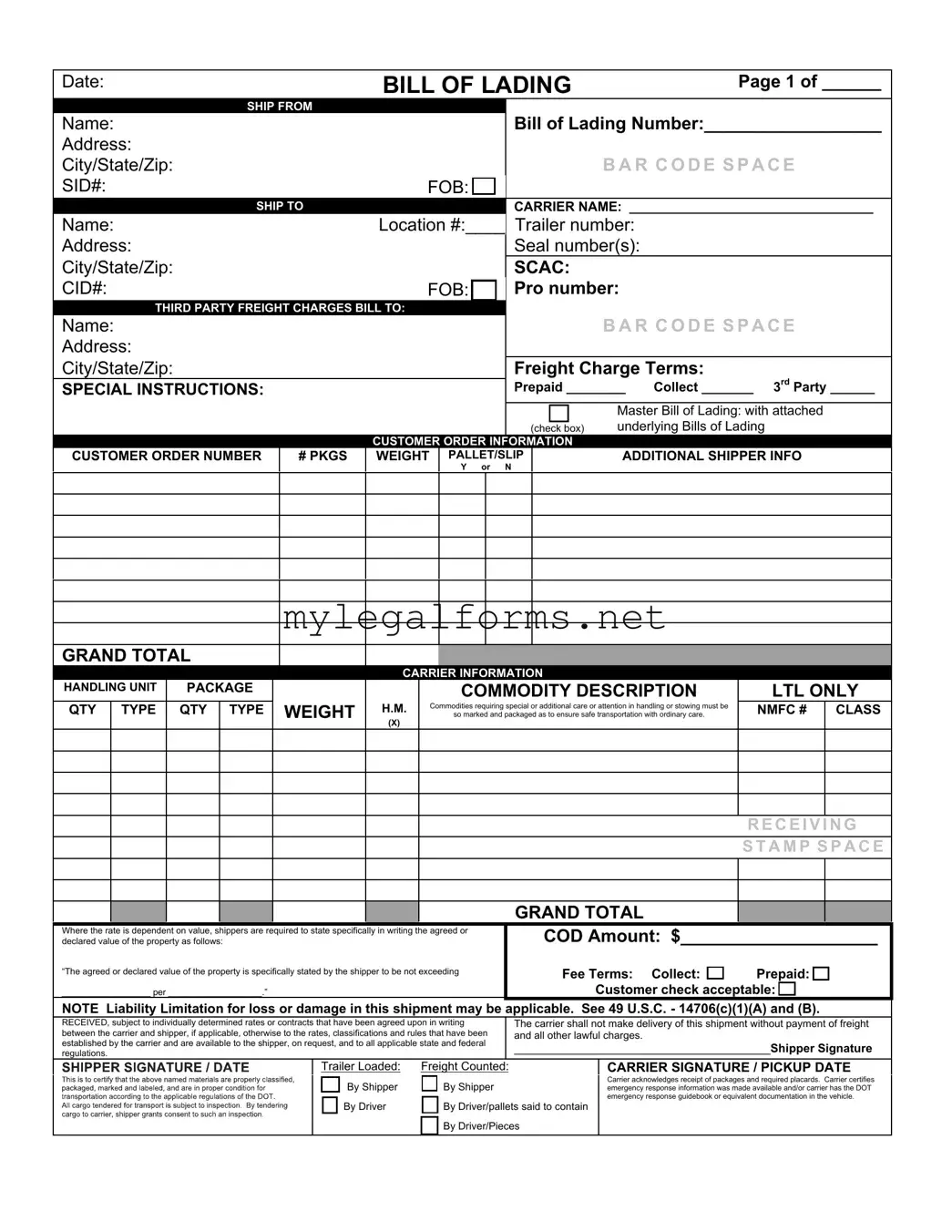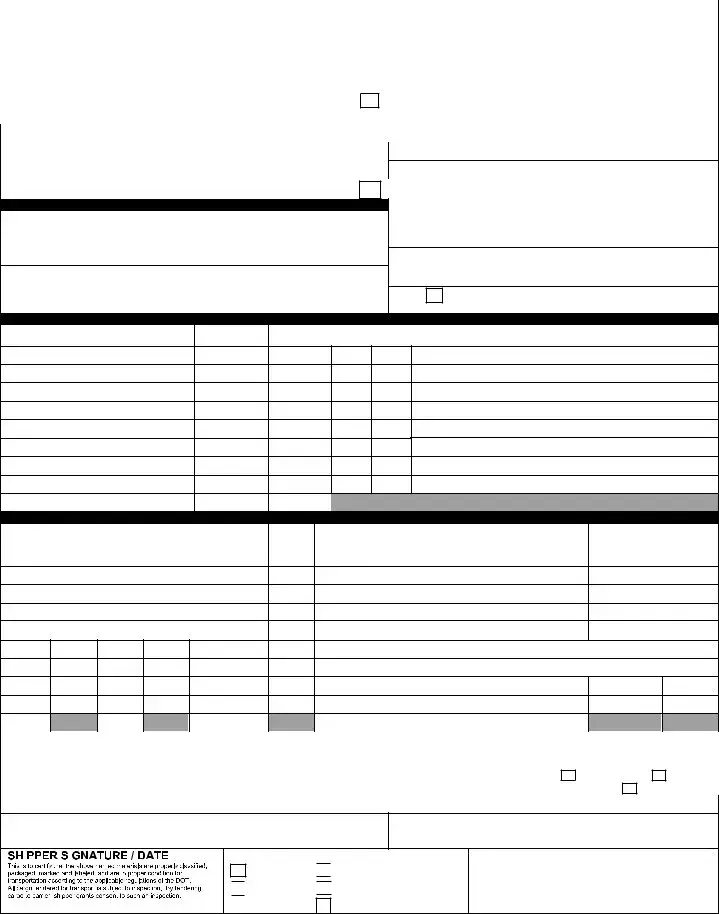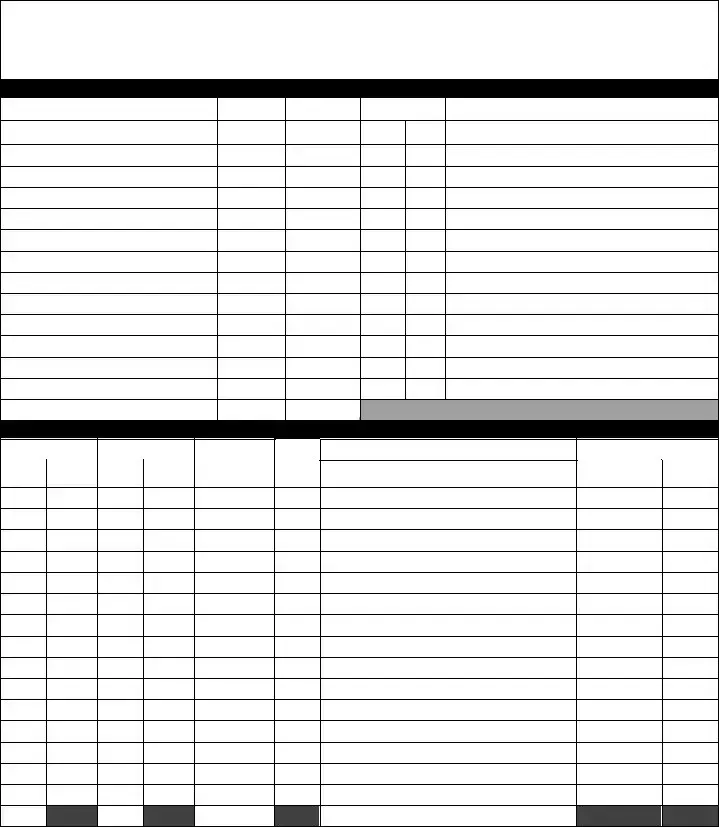Filling out a Bill of Lading with a Supplement form can seem straightforward, yet many people stumble over common mistakes that can lead to complications down the line. One frequent error is the omission of essential details. When shippers fail to include complete addresses or contact information, it can create confusion and delays in the shipping process. Always double-check that every field is filled out accurately.
Another mistake often made is the incorrect description of the goods being shipped. It’s crucial to provide a detailed and precise description, including the quantity, weight, and nature of the items. Inaccurate descriptions can lead to issues with customs or disputes during transit. Therefore, take the time to ensure that all details reflect the actual shipment.
In addition, many individuals neglect to indicate the proper shipping method. Whether it’s ground, air, or sea, specifying the correct mode of transport is vital. This detail affects how the shipment is handled and its overall cost. Without this information, carriers may default to a more expensive option, leading to unexpected charges.
Furthermore, failing to obtain the necessary signatures can derail the shipping process. A Bill of Lading requires signatures from both the shipper and the carrier. Without these, the document may not be considered valid, potentially resulting in delays or legal complications. Always ensure that signatures are collected before the shipment leaves.
Another common oversight involves not keeping copies of the Bill of Lading. It’s important to retain a copy for your records, as it serves as proof of the shipment and can be critical in resolving any disputes that may arise. A lack of documentation can leave you without recourse if problems occur.
Additionally, people often miscalculate shipping charges. When filling out the form, it’s essential to accurately calculate the total weight and dimensions of the shipment. Mistakes in these calculations can lead to underpayment or overpayment, both of which can complicate the shipping process. Always verify that your figures are correct before submission.
Another pitfall involves misunderstanding the terms and conditions associated with the Bill of Lading. Many individuals skip reading the fine print, which can contain crucial information about liability and claims. Familiarizing yourself with these terms can save you from unpleasant surprises later on.
Lastly, not updating the Bill of Lading when changes occur can lead to significant issues. If there are any alterations to the shipment, such as a change in destination or contents, these must be reflected on the form. Failure to do so can result in delays, misdeliveries, or even additional charges. Always keep the document current to avoid complications.


 to certify that the above named materials are properly classified, packaged, marked and labeled, and are in
to certify that the above named materials are properly classified, packaged, marked and labeled, and are in proper condition for transportation according to the applicable regulations of the DOT.
proper condition for transportation according to the applicable regulations of the DOT.
 By Shipper
By Shipper
 By Driver
By Driver 
 By Driver/pallets said to contain
By Driver/pallets said to contain